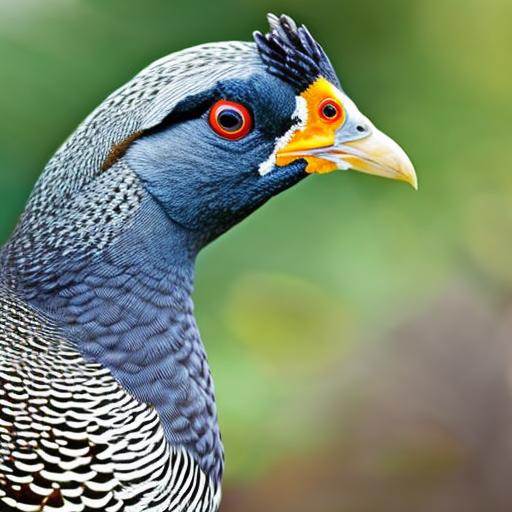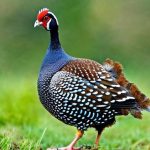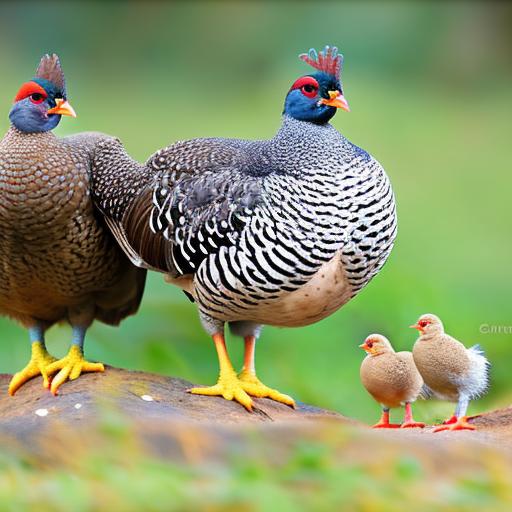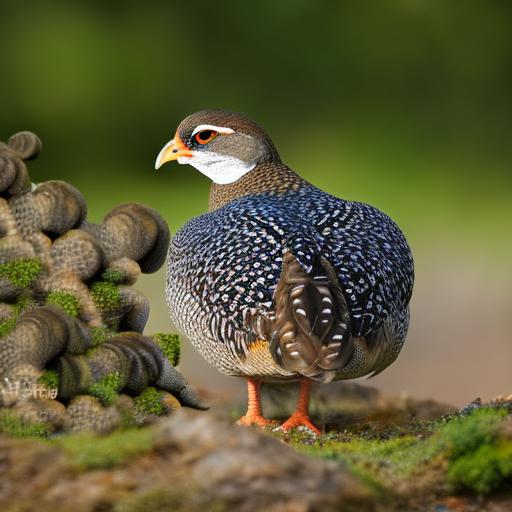Guinea fowl and Silkies are two unique and fascinating poultry breeds that are popular among backyard farmers and homesteaders. Guinea fowl, also known as guineas, are native to Africa and are known for their distinctive appearance and loud, chatty nature. They are often kept for their pest control abilities, as they are excellent at foraging for insects and other small pests. Silkies, on the other hand, are a breed of chicken that originated in China. They are known for their fluffy, silk-like feathers and gentle, friendly demeanor. Silkies are often kept for their ornamental value and make great pets for children due to their docile nature.
Guinea fowl and Silkies have different physical characteristics and behaviors, but they can be successfully kept together in the same coop with proper management. Both breeds have their own unique needs and requirements when it comes to housing, feeding, health care, and breeding. Understanding these differences and similarities is essential for successfully keeping Guinea fowl and Silkies together.
Key Takeaways
- Guinea fowl are known for their insect-eating abilities and loud calls, while Silkies are known for their unique fluffy feathers and gentle nature.
- Both Guinea fowl and Silkies require secure coops with adequate space, protection from predators, and proper ventilation.
- Guinea fowl and Silkies have specific dietary needs, including a balanced diet of commercial feed, fresh water, and occasional treats.
- Regular health checks, vaccinations, and parasite control are essential for keeping Guinea fowl and Silkies healthy.
- Guinea fowl are social birds that thrive in flocks, while Silkies are known for their calm and friendly demeanor, making them compatible for cohabitation.
Coop and Housing Requirements for Guinea Fowl and Silkies
Guinea fowl and Silkies have different housing requirements due to their unique behaviors and physical characteristics. Guinea fowl are known for their strong flying abilities and prefer to roost in trees at night. However, they can be trained to roost in a coop if provided with suitable perches. Guinea fowl also require a spacious outdoor area for foraging and exploring, as they are highly active birds. Their coop should be well-ventilated and predator-proof, with ample space for roosting and nesting.
Silkies, on the other hand, are not strong flyers and are more suited to ground roosting. They require a coop with low perches or nesting boxes that are easily accessible. Silkies also have feathered feet, which makes them more susceptible to damp conditions, so their coop should be kept dry and well-maintained. Both Guinea fowl and Silkies require protection from predators such as foxes, raccoons, and birds of prey, so their coop should be secure with sturdy fencing and a predator-proof design.
When keeping Guinea fowl and Silkies together, it’s important to provide separate areas within the coop for each breed to roost and nest comfortably. This can be achieved by dividing the coop into sections or providing separate nesting boxes for each breed. Additionally, providing ample space for both breeds to roam and forage outdoors is essential for their overall well-being.
Feeding and Nutrition for Guinea Fowl and Silkies
Guinea fowl and Silkies have different dietary needs and preferences when it comes to feeding and nutrition. Guinea fowl are primarily insectivorous and thrive on a diet of insects, seeds, grains, and greens. They are excellent foragers and enjoy hunting for insects in the grass and soil. In addition to their natural diet, Guinea fowl should be provided with a high-quality game bird feed that is specifically formulated for their nutritional needs. This feed should contain a balanced mix of protein, vitamins, and minerals to support their overall health and vitality.
Silkies, on the other hand, have a more omnivorous diet and enjoy a mix of grains, seeds, fruits, vegetables, and protein-rich foods such as mealworms or small insects. They also require a high-quality layer feed that is specifically formulated for laying hens to support their egg production and overall health. Additionally, Silkies have unique dietary requirements due to their feathered feet, which require extra care to keep clean and free from dampness. Providing a clean, dry area for feeding and access to fresh water is essential for maintaining the health and well-being of both Guinea fowl and Silkies.
When keeping Guinea fowl and Silkies together, it’s important to provide separate feeding areas within the coop to prevent competition and ensure that each breed has access to their specific dietary needs. Additionally, providing ample space for both breeds to forage outdoors will help supplement their diet with natural foods such as insects, seeds, and greens.
Health and Disease Management for Guinea Fowl and Silkies
Guinea fowl and Silkies are generally hardy breeds with good resistance to common poultry diseases. However, they still require proper health care and disease management to ensure their well-being. Guinea fowl are known for their robust immune systems and natural resistance to parasites such as ticks and mites due to their habit of dust bathing. However, they can be susceptible to respiratory diseases if kept in damp or poorly ventilated conditions. Regular health checks, proper ventilation, and access to clean water are essential for maintaining the health of Guinea fowl.
Silkies are known for their susceptibility to damp conditions due to their feathered feet, which can make them more prone to fungal infections or foot problems if not properly cared for. Additionally, Silkies may require extra protection from extreme weather conditions due to their unique feathering. Regular grooming, dry bedding, and access to clean water are essential for maintaining the health of Silkies.
When keeping Guinea fowl and Silkies together, it’s important to monitor their health regularly and provide appropriate care based on their specific needs. This includes regular health checks, proper grooming, access to clean water, and a clean living environment. Additionally, providing separate areas within the coop for each breed to roost and nest will help prevent the spread of diseases between the two breeds.
Behavior and Social Dynamics of Guinea Fowl and Silkies
Guinea fowl and Silkies have different social dynamics and behaviors due to their unique breeding history and natural instincts. Guinea fowl are highly social birds that thrive in small flocks and are known for their loud, chatty nature. They have a strong pecking order within their flock and can be territorial towards other birds if not properly introduced. Guinea fowl are also known for their strong flight abilities and can be skittish around humans if not handled regularly from a young age.
Silkies, on the other hand, are known for their gentle, friendly demeanor and are often kept as pets due to their docile nature. They are highly social birds that enjoy the company of other chickens or even other poultry breeds. Silkies are also known for their broody behavior and make excellent mothers when given the opportunity to hatch eggs.
When keeping Guinea fowl and Silkies together, it’s important to understand their different social dynamics and behaviors in order to prevent conflicts within the flock. Providing ample space within the coop for each breed to roost and nest comfortably will help reduce competition and territorial behavior. Additionally, regular handling from a young age will help socialize Guinea fowl and Silkies with humans, making them more comfortable around people.
Breeding and Reproduction of Guinea Fowl and Silkies
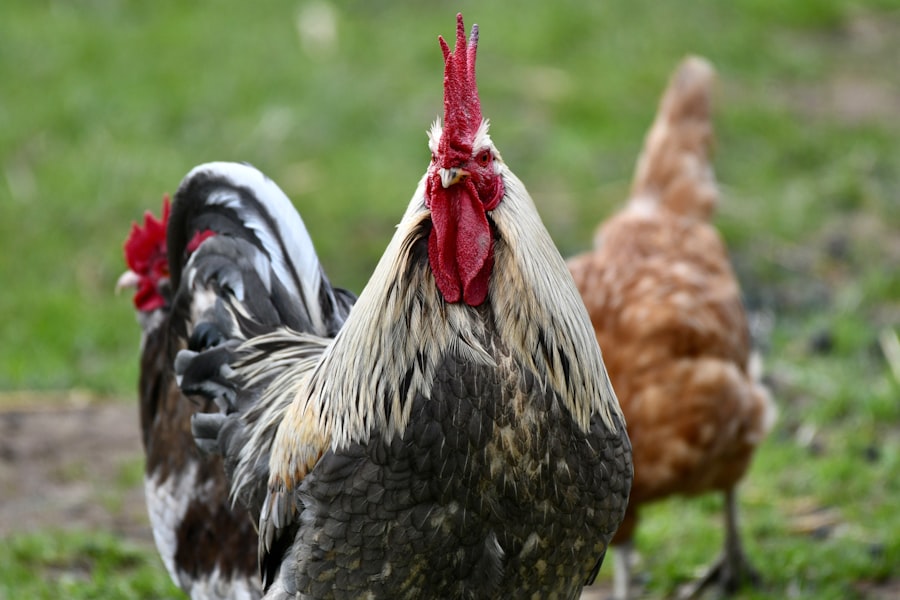
Guinea fowl and Silkies have different breeding behaviors and reproductive cycles due to their unique breeding history and natural instincts. Guinea fowl are known for their seasonal breeding habits, with females laying eggs in the spring or early summer. They are also known for their loud mating calls during the breeding season, which can be disruptive in a backyard setting. Guinea fowl require a quiet, secluded area within the coop to lay eggs and raise chicks without disturbance.
Silkies are known for their broody behavior and make excellent mothers when given the opportunity to hatch eggs. They have a strong maternal instinct and will often sit on a clutch of eggs until they hatch, regardless of whether the eggs are fertilized or not. Silkies require a quiet, secluded area within the coop to lay eggs and raise chicks without disturbance.
When keeping Guinea fowl and Silkies together, it’s important to provide separate nesting areas within the coop for each breed to lay eggs and raise chicks comfortably. Additionally, providing suitable nesting materials such as straw or shavings will help encourage broody behavior in Silkies while providing a quiet, secluded area will help encourage successful breeding in both Guinea fowl and Silkies.
Tips for Successfully Keeping Guinea Fowl and Silkies Together
Successfully keeping Guinea fowl and Silkies together requires careful planning, proper management, and understanding of their unique needs and behaviors. Here are some tips for successfully keeping Guinea fowl and Silkies together:
1. Provide separate areas within the coop for each breed to roost and nest comfortably.
2. Monitor their health regularly and provide appropriate care based on their specific needs.
3. Understand their different social dynamics and behaviors in order to prevent conflicts within the flock.
4. Provide ample space within the coop for both breeds to roam and forage outdoors.
5. Provide suitable nesting materials such as straw or shavings to encourage successful breeding in both Guinea fowl and Silkies.
6. Regular handling from a young age will help socialize Guinea fowl and Silkies with humans.
7. Ensure proper ventilation, predator-proof design, dry bedding, access to clean water, and suitable feeding areas within the coop.
By following these tips, you can successfully keep Guinea fowl and Silkies together in the same coop while ensuring their health, well-being, and overall happiness. With proper management and care, these two unique poultry breeds can coexist harmoniously in a backyard or homestead setting.
If you’re considering keeping guinea fowl with silkies, you may also be interested in learning about the natural hatching process of chicken eggs. Understanding how long it takes for chicken eggs to hatch naturally can provide valuable insights into caring for your poultry. Check out this informative article on Poultry Wizard to gain a deeper understanding of this fascinating aspect of poultry breeding.
FAQs
Can guinea fowl and silkies be kept together?
Yes, guinea fowl and silkies can be kept together in the same coop or enclosure. However, it’s important to provide enough space and shelter for both species to ensure they can coexist peacefully.
What are the benefits of keeping guinea fowl with silkies?
Keeping guinea fowl with silkies can provide benefits such as pest control, as guinea fowl are known for eating insects and ticks. Additionally, the two species can coexist and provide a diverse and interesting flock for poultry enthusiasts.
Are there any potential challenges to keeping guinea fowl with silkies?
One potential challenge of keeping guinea fowl with silkies is that guinea fowl can be noisy and may disturb the more docile silkies. Additionally, guinea fowl are known to be more independent and may not integrate as closely with the silkies as other chicken breeds.
What should be considered when housing guinea fowl and silkies together?
When housing guinea fowl and silkies together, it’s important to provide adequate space, shelter, and separate areas for nesting and roosting. Additionally, ensuring that the enclosure is secure to protect the birds from predators is crucial.
Do guinea fowl and silkies have similar dietary needs?
Guinea fowl and silkies have similar dietary needs, as both species require a balanced diet of poultry feed, grains, and access to fresh water. However, guinea fowl may also forage for insects and vegetation, so providing a diverse diet is important.
Meet Walter, the feathered-friend fanatic of Florida! Nestled in the sunshine state, Walter struts through life with his feathered companions, clucking his way to happiness. With a coop that’s fancier than a five-star hotel, he’s the Don Juan of the chicken world. When he’s not teaching his hens to do the cha-cha, you’ll find him in a heated debate with his prized rooster, Sir Clucks-a-Lot. Walter’s poultry passion is no yolk; he’s the sunny-side-up guy you never knew you needed in your flock of friends!

